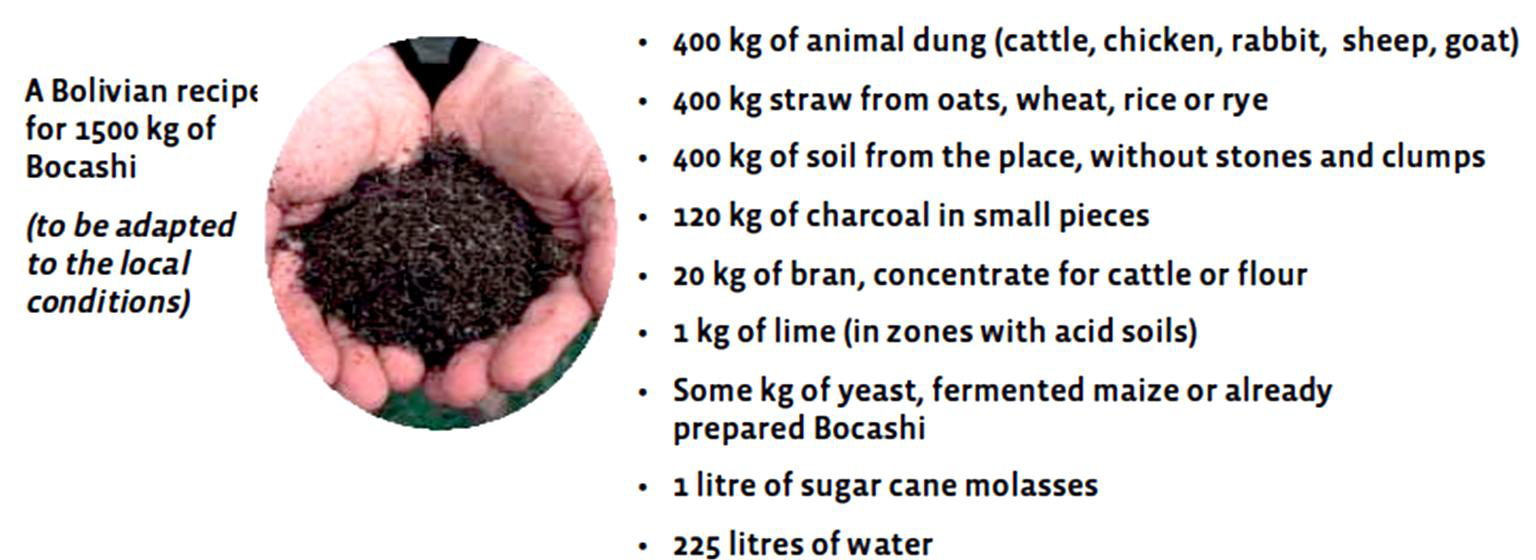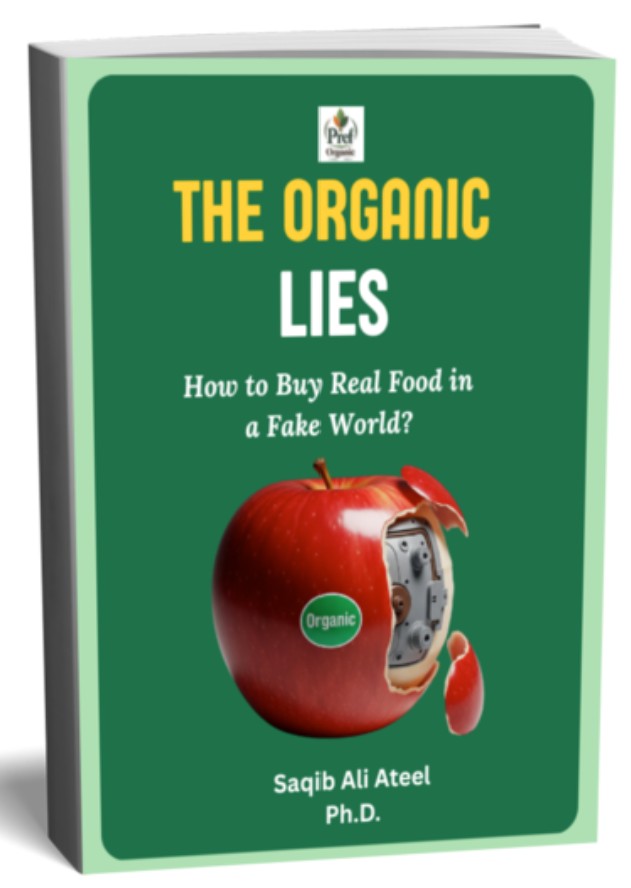Soil Testing for Organic Farming and Methods to Meet Deficiencies Optimally
Soil testing for organic farming is the first step to overview soil health. The primary function of soil is to act as a growth medium to provide nutrients, water, and support to a plant. Soil is supposed to be like a factory; we add seed, fertilizer, and water to the soil for crop production. Soil has several living organisms (about 35% of biodiversity). Most of them are microorganisms that can make the fertilizers available for plants.
Soil testing provides us firsthand information about different soil health attributes like soil texture, soil structure, pH, nutrient concentration, electrical conductivity, etc. The basic steps of soil testing for organic farming are:
- Divide the soil into homogenous units. If there is some particular patch (salt-affected, under continuous shade, hard crust, etc.), take a separate sample for that particular patch.
- Take 0 to 15cm depth soil samples from homogenous patches with the help of a soil auger (an instrument used for soil sampling) and mix them well. Then take a composite sample representing 0 to 15 cm soil depth.
- Then again, take soil samples from 16 to 30 cm soil depth from the same pits from where we early take 0 to 15 cm soil samples. Mix them well and take a composite sample representing 16 to 30 cm soil depth.
- After taking composite samples, add a paper chit in a soil bag containing the necessary information, including area, farmer's information, and soil sample depth. After that, submit the soil sample to Laboratory for analysis.
Attention: Do not mix 0 to 15cm samples with 16 to 30cm samples. Keep samples of different depths separately.
In the case of orchard or forest depth, soil samples may be increased up to 120cm or even more.
Nutrition Management
Reduced/Conservation Tillage
Tillage is the physical disturbance/manipulation of soil for various purposes like seedbed preparation, sowing of seeds, weed control, etc. However, excessive tillage operations loose the soil and cause erosion. Similarly, heavy implements for tillage sometimes make a hard layer/crust in the soil known as a hardpan. Over time it becomes hard and stiff, making land unfit for cultivation after a few years. So, we use conservation tillage in organic farming to save the soil with minimum disturbance. Conservation tillage includes operations that dig the soil for a few inches (up to 22.5cm) to make it but not erode. Usually, hand implements are used for this purpose. However, shallow depth mechanical implements are also available for this purpose.
Attention: If a soil has a hardpan (complex and hard soil layers), we use heavy machinery/implements to break it. After that, conservation tillage practices can be used further. Permanent beds can play the most crucial role in organic farming.
Addition of Organic Matter
A healthier soil should contain about 4% to 6% organic matter. Organic matter makes soil healthy by improving soil structure, acting as a sustainable source of nutrients for plants, and increasing the soil's microbial activity and water holding capacity. Many different ways can add organic matter to soil:
On a small scale, kitchen debris (peels, rotten fruits, vegetables, spoiled milk, etc.) can be used to source organic matter. Dig a small pit in the backyard of your home. Add kitchen waste in it and cover it with soil. After 20 to 30 days, waste is decomposed and converted into organic matter.
(a) Addition of Manure/Compost: composting is the process of converting plant or animal-based organic matter into humus (a decomposed form of organic matter readily available to plants) in pits. The process of composting is as follows
Dig a pit (depth of pit depends upon the availability of organic waste usually, depth is 90 cm) with a slight slope at the bottom.
Add straw at the bottom. Then add organic waste up to a depth of 30cm and cover it with a thin layer of soil.
Repeat the procedure until organic waste stands above 30 cm from the ground and is covered with a 10 cm soil layer.
Left the pit undisturbed. After 50 to 90 days, compost is ready for application mainly depending upon the temperature
It is necessary to control humidity during the composting process; otherwise, nutrients may lose from organic matter. Some indicators of humidity are
If white fungus appears, manure is very dry and needs wetting by water or farm urine.
If yellow-greenish color appears with a bad smell, it indicates that moisture is more and aeration is less in manure. Invert some compost for proper aeration.
If dark brown or blackish color appears in a heap, then compost condition is ideal.
Attention: Always add decomposed manure to the soil. Raw or un-decomposed manure may negatively affect the soil and cause the problem of termite attack under dry conditions.
(b) Application of organic matter through Fermenter: If the amount of organic matter is limited and the farm area is relatively large, the application of organic matter through a fermenter is the best option. A fermenter is a small square-shaped cemented structure with a tap on front, constructed from where water enters the farm area. We add organic waste (farmyard, domestic/kitchen waste, etc.) to the fermenter and fill it with water. After some days, organic waste dissolves and converts into liquid form. When a farmer wants to irrigate the field, this liquid form of organic matter can be provided with irrigation water. In this way, a small amount of organic matter can be added to a larger farm area.
(c) Use of microbes/organic fertilizer: Organic fertilizers contain beneficial microbes (mainly fungus and bacteria), which have several functions like fixing atmospheric nitrogen, decomposing organic matter, solubilizing the phosphorus, zinc, and other nutrients for easy uptake to plants, release organic acids and beneficial chemicals, etc. organic fertilizers can be applied by following ways
Seed inoculation: in this method, prepare the solution of commercially available microbes in water and sprinkle the solution on the seed before sowing. After that, place the seed under shade to dry and then sow the seed.
Root dipping in microbial solution before nursery shifting
Direct field application
Attention: commercially available organic fertilizers should not be used after expiry as microbes may die.

Figure shows how to prepare own bio-fertilizer? A well thought recipe!
(d) Green Manuring: Growing leguminous crops in the field and chopping them into the soil before flowering. This practice has many benefits like
Increase soil fertility
Microbes present in roots of leguminous crops fix atmospheric nitrogen into the soil
Increase soil organic matter contents
Improves microbial activity.
Suppress weeds
(e.) Some Other Methods
Ferment 5 Kg of jaggery /molasses in a water drum and let it ferment for 15-30 days, airtight. Fertigate it to improve the organic matter of one acre. Repetition with every water will help to improve the soil conditions by improving conditions for microbes.
Rotavate plant parts other than the economic part back into the soil.
Please do not burn the crop residues as it destroys the soil organic matter contents and causes the death of soil microbes in upper soil layers.
Cover Crop
It is the practice of growing a crop either sole or with another crop to cover the soil to protect it from erosion and increase its fertility. A cover crop should have the following features
It should be a restorative crop (preferably a leguminous crop).
Easy to grow and manageable.
A rapid growth rate to cover the soil in a short time.
Add nutrients to the soil to maintain/increase its fertility.
Resistant to pests and diseases.
Produce a large amount of organic matter
It can be used as fodder
Attention: Cover crop is preferably used in the humid region, as in arid/dry region, there is a problem of water scarcity and high temperature and cover crop may cause competition for water with the main crop.
Concluding Remarks
Many methods and techniques are used for nutrient management in organic farming. However, a grower should choose suitable techniques keeping in view the needs, available resources, soil testing report, climatic conditions, and market trends of the area.
Improving soil health is very important for successful crop production, especially in organic farming in which we do not use synthetic chemical additives
Mulching
It is a practice to cover the soil with some material (crop residues, leaves, twigs, farm waste, etc.). Mulching conserves the soil by following ways
Provide a covering sheet on the soil surface and minimize wind and water erosion
Increase rain and irrigation water infiltration
Reduce evaporation water loss
Influence soil micro-climate by modifying soil temperature and moisture contents, especially in arid regions
Suppress weed growth
Increase the activity of soil microbes
Improves soil nutrient status
Crop Rotation
is the sequence of growing crops to conserve soil and improve soil health by maintaining nutrients and water use in a balance. It involves following necessary steps
Exhaustive (draw more nutrients from the soil) crop rotated by restorative crop.
More water-required crop rotated with less water required crop.
Add some green manuring crop in rotation (to promote microbial activity and increase soil fertility).
Deep-rooted crop rotated with a shallow-rooted crop for judicious use of nutrients and water in different soil layers.
Also, give space to leguminous crops in rotation to maintain soil fertility.
Integrated Nutrient Management:
This approach uses organic and inorganic nutrient sources for crop production. Generally, inorganic fertilizers are not recommended in organic farming; they may be allowed minimally under certain circumstances. For example, sometimes the soil is much deficit in a particular nutrient and requires synthetic nutrient sources for readily availability of that nutrient for proper plant growth.
Another example is nitrogen. Nitrogen is the most deficient nutrient in most soils due to its excessive mobility in soil, leaching (reaching nitrogen below the root zone), and losses through sublimation and de-nitrification (the process in which nitrogen in soil converts into gaseous form and transfer from soil to atmosphere). Unlike other nutrients, nitrogen is preferably given in episodes rather than at once at the time of sowing.
So, fertilizer may be allowed in organic farming, but only from natural sources (preferably rock minerals), not from purely artificial sources.
References:
https://extensionpublications.unl.edu/assets/pdf/g2295.pdf
https://www.researchgate.net/publication/266375765_Soil_and_nutrient_management_on_organic_farms
